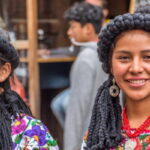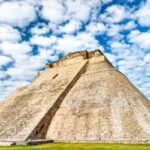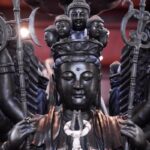We explain what the main Mayan gods were, the characteristics of each one and the myths that explain their origin.
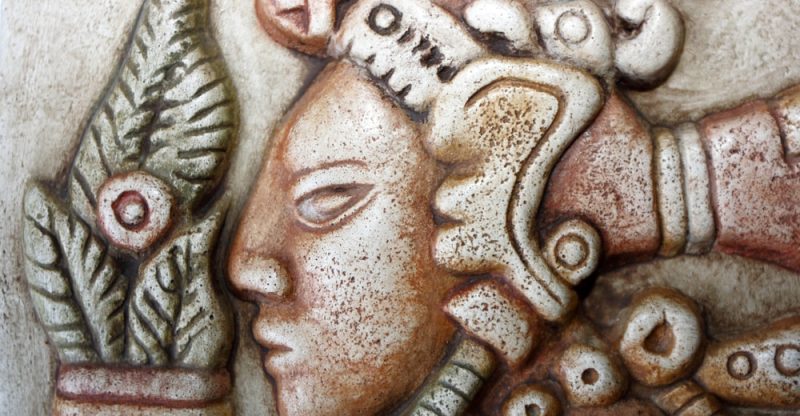
What were the main Mayan gods?
The Mayan culture was a Mesoamerican civilization that lived in the territory of the southern Mexican states (Yucatán, Quintana Roo, Chiapas and Tabasco), as well as in regions of Guatemala, Belize and the western part of Honduras and El Salvador. This civilization occupied an area of almost 300,000 square kilometers since 2000 BC. C. until 1500 AD. C. approximately.
The religion of the Mayans was based on the belief in multiple gods. They had a sacred book called Popol Vuh, in which they described the history of the creation of the universe. The Mayans believed that the gods had conceived and destroyed the world on numerous occasions. In the last creation, they had made man and endowed him with wisdom.
For this reason, the main religious practices of the Mayans were based on rituals of gratitude. They believed that it was necessary to honor the gods for their own existence and that of the elements they needed to live in this world. Through different offerings, the Mayans sought to achieve favor and avoid the wrath of the gods.
The Mayan gods were represented in human and animal form, and were linked to different aspects of nature. Among the most important gods were:
- Itzam Na. God of the sky, the most important creator, associated with the sky, day and night.
- Kukulkan. God of knowledge, associated with the sun, reincarnation and the elements (water, fire and earth).
- Hurricane. God creator of man, associated with wind and storms.
- Ixchel. Goddess of the moon, associated with births and medicine, but also with destruction.
- Chaac. God of rain, associated with fertility, agriculture and the cardinal points.
- Ah Puch. God of death, associated with destruction, disease and war.
Important: Our knowledge about the Mayan gods comes from sources that present different versions of mythology. For this reason, they are sometimes known by different names, they are given more or less importance and various attributes are recognized.
Itzam Na

Itzam Na was one of the most important deities. The Mayans identified it as the primordial god that existed before any creation. He was also known as Hunab Ku (which in some versions was himself and in others, his son), Hun Itzamná and Yaxcocahmut.
He was worshiped in Chichén Itzá and other cities, especially in the Yucatán Peninsula.
- Attributes. He was the god of the sky, day, night and wisdom.
- History. In some Mayan traditions, Itzam Na was considered the creator god of everything that existed. In others, he was recognized as the god who gave humanity wisdom, gave it the calendar and corn (fundamental elements for its survival). There was a human manifestation of Itzam Na, called Itzam Can, who acted as a sorcerer or priest.
- Symbols. He was represented as an old man with a beard. Sometimes he was illustrated wearing a crown or headdress that symbolized his status as the chief god, or holding a glyph (written sign) that represented his connection to wisdom.
Kukulcan
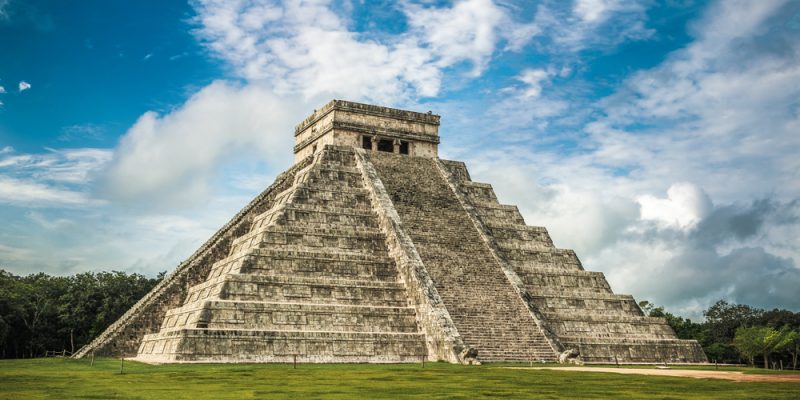
Kukulcán was a god of Toltec origin who was incorporated into Mayan mythology. It was associated with the god Quetzalcoatl (known as the “feathered serpent”) for having similar attributes.
He appears in the Popol Vuh under the name of Gucumatz or Q'uq'umatz, and it is said that, along with Tepeu, he was one of the two divine entities who discussed the creation of the human being.
Kukulcan was revered especially in the Yucatan Peninsula by the Itzá Mayans in Chichén Itzá, the Cocome Mayans in Mayapán and the Tutul Xiú Mayans in Maní. In each of these cities there were large temples in his honor.
- Attributes. He was the god of knowledge and was associated with the heat of the sun and the reincarnation of life. He was also a god who manipulated the energy of water, earth and fire.
- History. According to Mayan myths, he was a conquering god who arrived in human form from the western seas and settled in Yucatan to become lord of the winds, thunder and rain.
- Symbols. It was often represented as an animal similar to a tapir, with a long nose and wind coming out of its mouth. He was also shown carrying lighted torches, sowing the earth or walking on water, clear indications of his divine and solar nature.
Tepeu
In one of the Mayan traditions, Tepeu appeared as one of the creator gods. However, in most traditions it was recognized as a form that other gods could take (for example, the god Itzam Na or the god Tohil).
- Attributes. According to some versions, Tepeu participated in the creation of humanity.
- History. Tepeu is a god named in the Popol Vuh, the sacred book of Mayan tradition. In this story, he appeared as a progenitor god who existed in the world before creation itself, along with Kukulcán.
- Symbols. There are no graphic representations of this deity like Tepeu, but in the descriptions he was assimilated to the elements of the sky, such as clouds and the sun.
Hurricane
Huracán (“the one-legged one”) was a celestial god who personified storms, floods and other natural catastrophes. According to the Popol Vuh, he was part of the “heart of heaven”, in a triad of formless gods (Caculhá Huracán, Chipi-Caculhá and Raxa-Caculhá) who had assisted the progenitor gods in the creation of the world.
- Attributes. He had the power to control natural cycles and create winds and storms.
- History. In some stories, it was said that Huracán was the god responsible for the universal flood that had wiped out previous human creations. He was also described as one of the gods who created the last form of the human being.
- Symbols. It was represented as a kind of reptile, with a snake's tail, a large crown and a single leg, with which it could travel long distances in a very short time. He was also depicted upside down, walking on his hands or carrying a smoking torch, a symbol of his divine nature.
Ixmucane
Ixmucané was an elderly and benevolent deity, linked to wisdom. Her importance in Mayan mythology lay in the fact that she was the grandmother of the twin heroes Hunahpú and Ixbalanqué, protagonists of an important myth of the Popol Vuh due to their confrontation with the lords of the underworld (Xibalbá).
- Attributes. She was an agricultural goddess, associated with old age and wisdom. She was described as a compassionate and protective deity.
- History. Her name translated as “owner of the corn” and she was, according to the Popol Vuh, one of those responsible for human creation from different grains of corn. In many Mayan traditions, she was called the “great grandmother” or the “grandmother of corn.”
- Symbols. There were not many representations of this deity, but she was linked to corn kernels or she was portrayed with her grandchildren.
Hun-Hunahpú
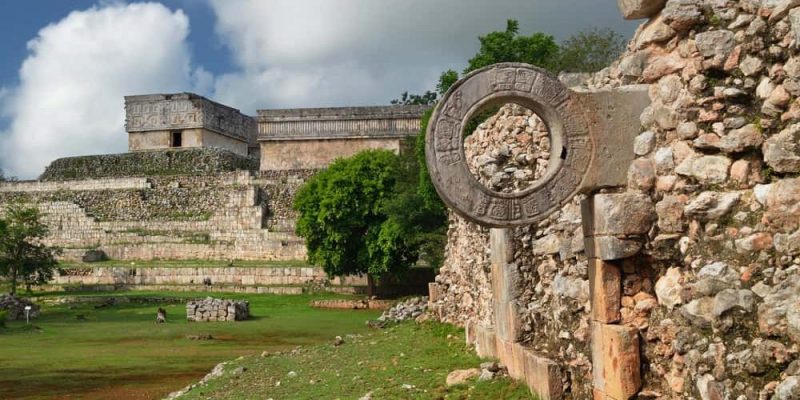
Hun-Hunahpú was the Mayan god of fertility and the ball game, father of the twin heroes Hunahpú and Ixbalanqué. He was also known as Hun Nal Ye during the classical Mayan era.
- Attributes. He was an agricultural god, also associated with bravery and skill in war.
- History. In Mayan myths, this god played ball daily against his brother Vucub-Hunahpú. One day they were invited by the lords of the underworld as part of a deception. There, Hun-Hunahpú was beheaded and in his place grew a pumpkin plant, with his head as one of its fruits.
- Symbols. It is a god associated with corn. There are also representations that show him reviving inside the shell of a turtle (which symbolized the world), along with his two twin sons.
Ixchel
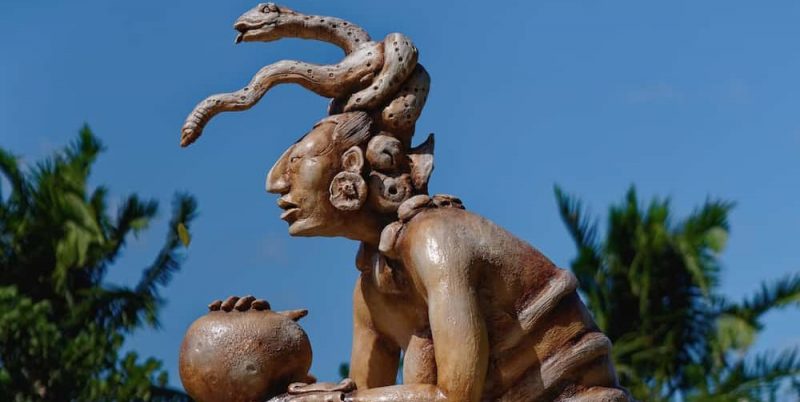
Ixchel was one of the most important deities in Mayan mythology. She was a lunar goddess and was also called “rainbow woman.” His main place of worship was the island Cuzamil (Cozumel), in the current Mexican state of Quintana Roo.
- Attributes. Mayan goddess of water, love, pregnancy, the moon, medicine and textile works. His nature was multiple and he could act with benevolence or cruelty. In some traditions, she was considered a healing mother and mistress of medicinal herbs, and in others she was linked to the activity of looms and weaving.
- History. Ixchel was revered as an important lunar goddess and was considered the partner of Itzam Na. It had control over water flows, which is why it was associated with storms, but also with the fertility of the land.
- Symbols. She was usually represented accompanied by a rabbit, with a snake on her head and a skirt of crisscrossed bones. He often appeared pouring a pitcher on the world.
Chaac
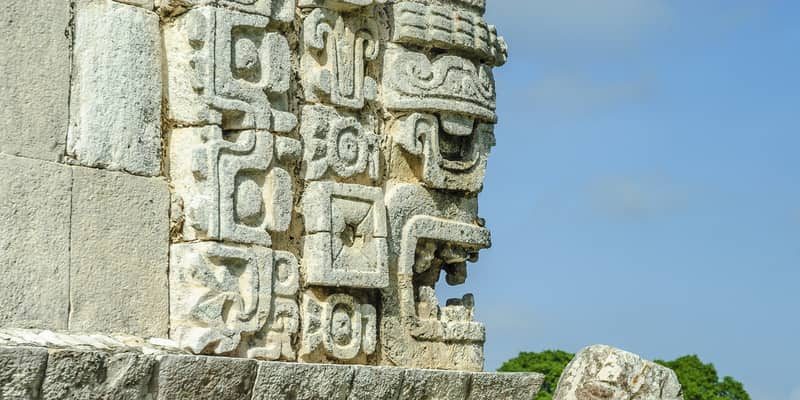
Chaac was another of the most important deities of the Mayan pantheon. It was associated with rain and can be linked to the Aztec god Tlaloc.
- Attributes. He was considered one of the creator gods, responsible for giving fertility to the dry land.
- History. When Chaac hit the clouds, the rain began. That is why it was venerated through gratitude rituals, with the aim of avoiding droughts.
- Symbols. He was represented as an amphibian or reptile with a long, sloping trunk, or as an old man with a long, curved nose. He was also linked to the four cardinal points, which could be represented as four aspects of the same god: Chac Xib Chaac (Red Chaac of the East), Sac Xib Chaac (White Chaac of the North), Ek Xib Chaac (Black Chaac of the West). or Kan Xib Chaac (Southern Yellow Chaac).
Ah Puch
Ah Puch, also known as Yum Kimil or Kisin, was a Mayan deity associated with death and the underworld. His figure was feared and respected, since he was the god responsible for guiding the souls of the deceased in the kingdom of the dead.
- Attributes. He was known as the god of death and the underworld. His presence evoked fear and reverence, and he was considered a sinister and macabre figure.
- History. He played a crucial role as the ruler of Xibalbá, the Mayan underworld. He and his assistants were believed to oversee the fate of the souls of the deceased and punish sinners. Their history was filled with tales of deception and trials for human beings.
- Symbols. It was represented with elements associated with death and the underworld, such as bones, skulls and snakes. He was often shown with a dislocated jaw or looking like a skeleton. Symbols of power were also awarded to him, such as a crown or a scepter, which indicated his position as ruler of the kingdom of the dead.
Hunahpú and Ixbalanqué
Hunahpú and Ixbalanqué were two heroes of Mayan mythology who appeared in the stories of the Popol Vuh. They were also known as “the twin gods.”
- Attributes. They were revered for their bravery, cunning, and supernatural abilities. Due to their role in the fight against the underworld, they were considered heroic figures and protectors of humanity.
- History. His story is that of the fight against the lords of the underworld and is full of trials and sacrifices. In the myth, Hunahpú was killed and then revived by his brother. Later, they defeated the lords of Xibalbá together in a ball game.
- Symbols. They used to represent them with a blowgun in their mouth and with elements associated with the ball game, such as protective gloves. They were also shown with symbols of power and defense, such as weapons and shields.
document.addEventListener(“DOMContentLoaded”, (e) => {
var sliderContainer, slider;
sliderContainer = document.getElementById(‘block_867dcbd23c8fe35ec0230ae01b2e778b’);
if (typeof initSlider !== ‘function’) {
console.log(‘Swiper haven\’t been loaded’);
sliderContainer.className += ‘ fw scroll-snap’;
return;
};
options = {
direction: ‘horizontal’,
speed: 1000,
slidesPerView: ‘auto’,
// slidesPerGroup: 1,
centerInsufficientSlides: true,
// centeredSlides:true,
spaceBetween: 15,
breakpoints: {
720: {
// centeredSlides: false,
// slidesPerGroup: 2,
spaceBetween: 25
},
},
pagination: {
el: ‘.swiper-pagination’,
type: ‘bullets’,
clickable: true
},
}
slider = initSlider(sliderContainer, options);
})
References
- De la Garza Camino, M and Ilia Nájera Coronado, M. (Eds.). (2012). The gods: energy in space and time. Mayan Religion. Ibero-American encyclopedia of religions. Trotta.
- Jordan, M. (2004). Dictionary of Gods and Goddesses. Facts on File.
- Mercatante, AS and Dow, JR (2009). World Mythology and Legend. Facts on File.

